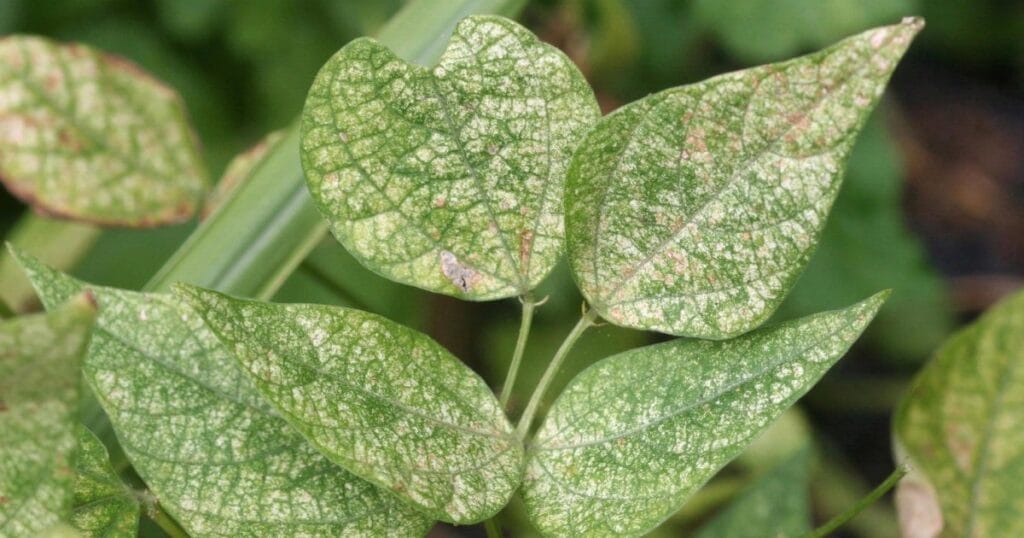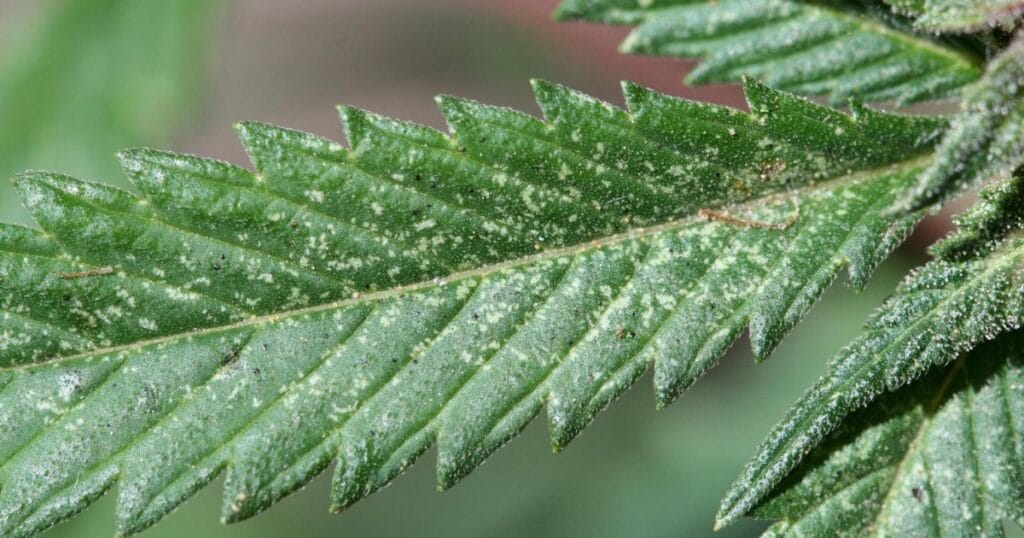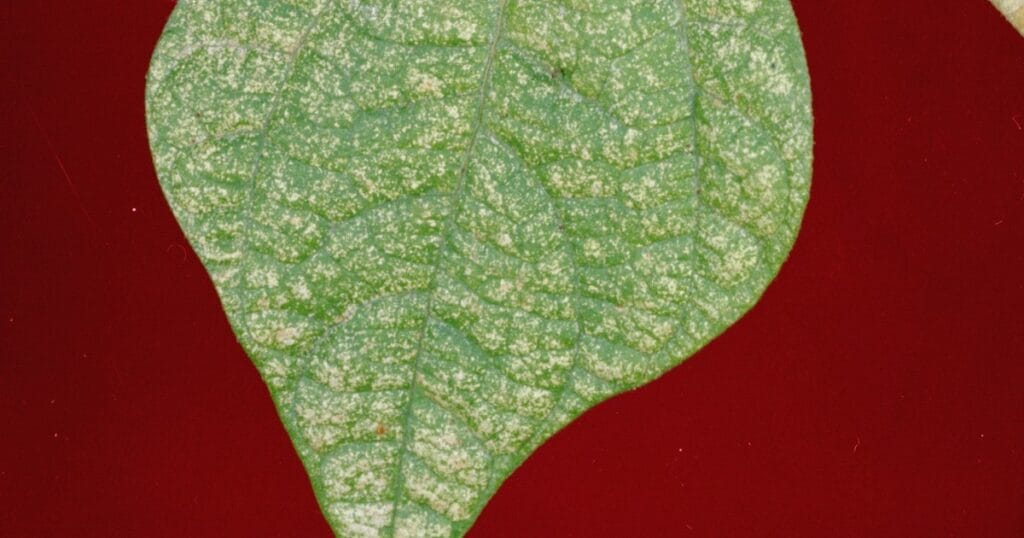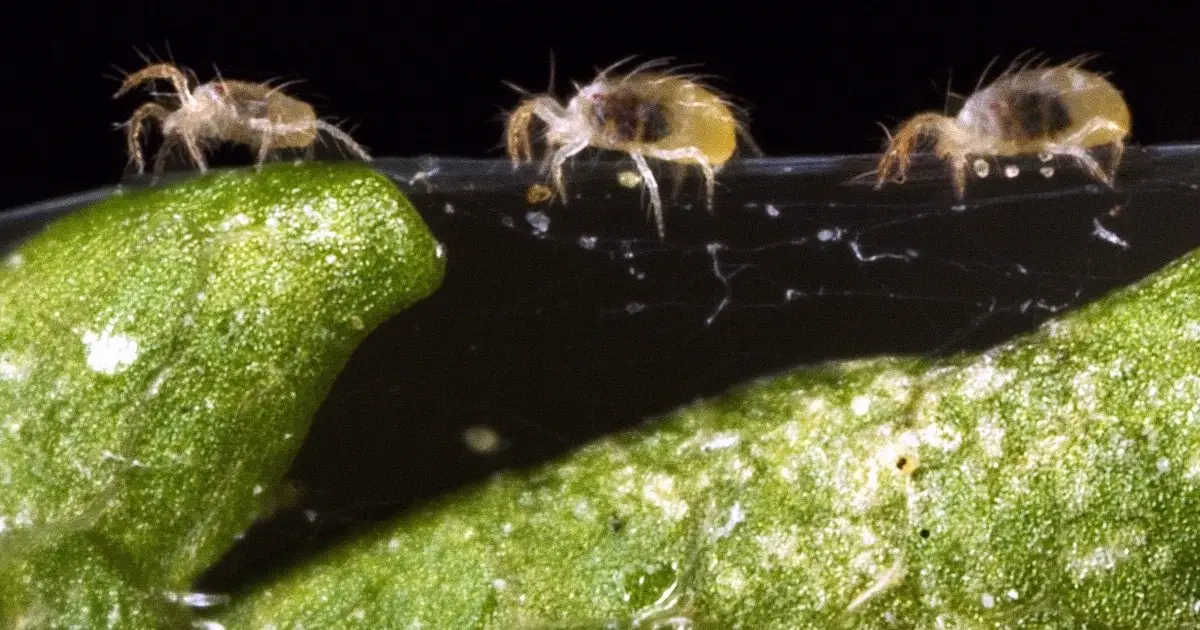Spider Mites Key Takeaways
- Spider mites are not insects but arachnids closely related to spiders and ticks
- These microscopic pests thrive in hot, dry conditions and can devastate plants within days
- The IPM 7-step process provides a systematic approach to managing spider mite infestations
- Prevention through proper environmental control is far more effective than treatment alone
- Early detection and identification are crucial for successful spider mite management
- Biological control agents offer sustainable, long-term solutions
Picture this: You walk into your garden on a beautiful morning, coffee in hand, ready to admire your thriving plants. But wait – what are those tiny yellow spots scattered across your tomato leaves? And why do some leaves look like they have been dusted with the finest spider webs?
Welcome to the world of spider mites, where size truly does not matter when it comes to causing massive plant damage. The most crucial truth you need to understand is this: these microscopic creatures can transform a healthy garden into a battleground faster than you can say “integrated pest management.”
Table of Contents
Spider Mite Mystery: Unveiling the the Great Invisible Enemy
Here lies the foundation of all successful pest management: you cannot fight what you do not understand. Spider mites belong to the family Tetranychidae, and despite their name, they are not spiders at all. These eight-legged arachnids measure less than 1 millimeter in length – so small that you need a magnifying glass to see them clearly.
As the renowned entomologist Dr. May Berenbaum once said, “The smallest creatures often wield the mightiest power over our agricultural systems.” This statement perfectly captures the spider mite’s ability to cause disproportionate damage despite their tiny size.
The disease triangle principle teaches us something vital: spider mites thrive when three conditions align perfectly – a susceptible host plant, favorable environmental conditions, and the presence of the pest itself. Think of it as a perfect storm, but in miniature.

Understanding the Spider Mite Life Cycle
| Life Stage | Duration | Temperature Dependent | Key Characteristics |
|---|---|---|---|
| Egg | 3-7 days | Yes (faster in heat) | Spherical, translucent |
| Larva | 2-3 days | Yes | Six-legged, very small |
| Protonymph | 1-2 days | Yes | Eight-legged, pale |
| Deutonymph | 1-2 days | Yes | Eight-legged, developing |
| Adult | 2-4 weeks | Temperature dependent | Fully mature, reproductive |
This timeline reveals a terrifying truth: under optimal conditions (around 80°F), spider mites can complete their entire life cycle in just one week! No wonder infestations seem to appear overnight.
The IPM Detective Story: Following the 7-Step Process

Step 1: Prevent – Building Your Fortress
The most powerful weapon in your arsenal is prevention itself. Just as Benjamin Franklin wisely noted, “An ounce of prevention is worth a pound of cure,” this principle holds especially true for spider mite management.
Spider mites despise humidity. This single environmental factor can make or break your prevention strategy. Maintain humidity levels above 40% around your plants, and you will create an environment where spider mites struggle to establish colonies.
Historical fact: During the Dust Bowl of the 1930s, spider mite populations exploded across the Great Plains due to extremely dry conditions, causing additional stress to already struggling crops.
Prevention strategies that actually work:
- Install misting systems or humidifiers in enclosed growing spaces
- Mulch around plants to retain soil moisture
- Avoid over-fertilizing with nitrogen, which creates tender growth that mites love
- Choose resistant plant varieties when available
Step 2: Inspect – Becoming a Plant Whisperer

Your eyes are your most valuable inspection tools, but you need to train them properly. Spider mites typically start their invasion on the undersides of leaves, particularly the older, lower leaves of plants.
What should you look for during inspection? The devil truly lies in the details:
- Tiny yellow, white, or brown spots on leaf surfaces (stippling)
- Fine webbing between leaves and stems
- Leaves that appear dusty or have a bronze cast
- Premature leaf drop
Pro tip: Hold a white piece of paper under a suspected branch and tap it gently. If tiny moving specks fall onto the paper, you have found your culprits!
Step 3: Identify – Know Your Enemy

Accurate identification separates successful pest managers from frustrated plant caretakers. Not all tiny moving dots are spider mites, and not all plant damage comes from these arachnids.
Are hairs on plants spider mites? This common question deserves a clear answer: No! Plant hairs (trichomes) are natural structures that help protect plants. However, spider mite webbing can sometimes be mistaken for plant hairs by untrained eyes.
Are spider mites insects? Another frequent misconception needs correction: spider mites are arachnids, not insects. This distinction matters because it affects which control methods work best.
| Spider Mites | Thrips | Aphids | Plant Hairs |
|---|---|---|---|
| 8 legs | 6 legs | 6 legs | Stationary |
| Webbing present | No webbing | No webbing | Part of plant |
| Stippled damage | Silvery streaks | Yellowing | No damage |
| Very small | Small | Small to medium | Various sizes |
Step 4: Analyze – The Science of Decision Making
This step determines whether your management efforts succeed or fail spectacularly. Dr. Rachel Carson, author of “Silent Spring,” emphasized that “The more clearly we can focus our attention on the wonders and realities of the universe about us, the less taste we shall have for destruction.”
Analyze these critical factors:
- Population density: How many mites per leaf?
- Plant stress levels: Are plants already weakened?
- Environmental conditions: Temperature, humidity, air circulation
- Natural enemy presence: Are beneficial insects already helping?
Economic threshold considerations: Sometimes the cost of treatment exceeds the value of potential damage. This analytical approach prevents unnecessary interventions.
Step 5: Treat – The Art of Precise Intervention
Treatment success depends entirely on understanding that spider mites are not insects. Traditional insecticides often fail against these arachnids, and worse, they may eliminate beneficial insects that naturally control spider mites.
Are spider mites bad? Absolutely! They can reduce plant photosynthesis by up to 60% in severe infestations, leading to significant yield losses and plant death.
Biological Control Options
The most sustainable approach leverages nature’s own pest control specialists:
| Beneficial Species | Target Stage | Effectiveness | Release Rate |
|---|---|---|---|
| Phytoseiulus persimilis | All stages | Excellent | 2-5 per plant |
| Neoseiulus californicus | All stages | Good | 5-10 per plant |
| Amblyseius andersoni | All stages | Good | 5-10 per plant |
| Feltiella acarisuga | Eggs/larvae | Moderate | 0.5-1 per plant |
Chemical Control Options
When biological control alone is insufficient, targeted miticides can provide effective relief:
- Horticultural oils: Suffocate mites without harming beneficials
- Insecticidal soaps: Disrupt mite cell membranes
- Botanical miticides: Plant-derived compounds with low environmental impact
Historical IPM success story: In 1959, the University of California pioneered the first comprehensive IPM program for spider mites in apple orchards, reducing pesticide use by 75% while maintaining effective control.
Step 6: Evaluate – Measuring Success
Evaluation separates temporary fixes from long-term solutions. Dr. Carl Huffaker, the father of biological control, once stated, “Success in pest management is not measured by the absence of pests, but by the maintenance of balance.”
How to evaluate treatment effectiveness:
- Monitor mite populations weekly for 4-6 weeks post-treatment
- Assess plant recovery (new growth, leaf color improvement)
- Document beneficial insect recovery
- Calculate cost-benefit ratios
Step 7: Document – Building Your Knowledge Empire
Documentation transforms individual experiences into systematic knowledge. Keep detailed records of:
- Weather conditions during outbreaks
- Treatment methods and their effectiveness
- Beneficial insect populations
- Plant varieties and their susceptibility
Frequently Asked Questions
How to get rid of spider mites naturally?
The most effective natural approach combines multiple strategies: Increase humidity around plants, introduce beneficial predatory mites, and use horticultural oil sprays. Ladybugs, lacewings, and predatory mites will establish natural control if you avoid broad-spectrum pesticides.
How to kill spider mites quickly?
Speed kills, but accuracy kills better. For rapid knockdown, use horticultural oil or insecticidal soap sprays applied every 3-5 days for two weeks. However, quick fixes without addressing underlying causes often lead to repeat infestations.
Can spider mites live without plants?
Spider mites cannot survive more than a few days without host plants. However, they can enter a survival state called diapause during unfavorable conditions, emerging when suitable hosts become available.
Do spider mites bite humans?
Some spider mite species can bite humans, causing minor skin irritation. However, they cannot reproduce on human hosts and prefer plant tissues for feeding and reproduction.
What temperature kills spider mites?
Temperatures above 100°F (38°C) for extended periods can kill spider mites, while temperatures below 40°F (4°C) cause mortality in most species. However, some species have adapted to extreme temperature ranges.
The Victory Garden: Your Success Story Begins
Remember this fundamental truth: spider mites are formidable opponents, but they are not invincible. As the great ecologist Aldo Leopold wrote, “A thing is right when it tends to preserve the integrity, stability, and beauty of the biotic community.”
Your integrated approach to spider mite management preserves this balance while protecting your plants. The journey from infestation to restoration teaches valuable lessons: patience, observation, and respect for natural systems create sustainable solutions.
Every successful pest manager started exactly where you are now – facing tiny adversaries with enormous appetites for destruction. But armed with the IPM 7-step process and the disease triangle understanding, you possess the tools for victory.
The choice is yours: Will you let these microscopic marauders dictate terms, or will you become the strategic commander of your own integrated pest management success story?
As you implement these strategies, remember that each small victory contributes to a larger understanding of sustainable agriculture. Your garden becomes not just a place of beauty and production, but a living laboratory where you develop skills that benefit the entire agricultural community.
The war against spider mites continues in gardens around the world, but now you have the knowledge, tools, and confidence to join the ranks of successful IPM practitioners. Your plants are counting on you, and with this guide, you will not let them down.
Sources:
- Berenbaum, M.R. (1995). “Bugs in the System: Insects and Their Impact on Human Affairs”
- Carson, R. (1962). “Silent Spring”
- Huffaker, C.B. (1971). “Biological Control of Insect Pests and Weeds”
- Leopold, A. (1949). “A Sand County Almanac”
- University of California IPM Program Historical Records (1959-present)
